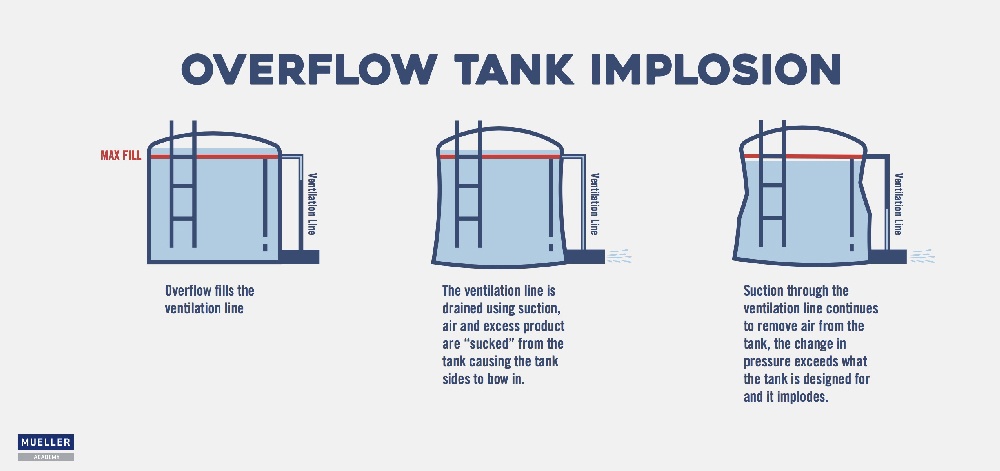An imploded tank means down time for your business. Learn these critical mistakes and how to avoid them to save you time and money.
Improper CIP Timing and Condensation
If cold media enters your tank immediately after hot media, the tank may implode if it is not allotted proper time to cool down and if there is not the proper ventilation needed to control condensation. The ventilation allows air to enter your tank which compensates for the changing volume that occurs during steam condensation.

Overflow Entering the Ventilation System
Your ventilation system should not be used to store overflow or to determine when your tank is full. When your tank is shut off with overflow in the system, the product needs to be “sucked” out of the ventilation. Air from inside your tank may be removed as well during this process causing the sides of your tank to curve in. If too much air is removed, your tank will implode.
Click to enlarge
Inadequate Venting
The size of your vent and filter must allow an air flow rate that is equal to your tank fill rate. If a vent is clogged or closed, it is considered insufficient because it does not provide adequate venting due to the limited amount of air flowing into a tank. When the two rates are unequal, implosions aren’t the only threat, a loss of sterility can also occur.
Controlled implosion of a rail car connected to a vacuum.
Equipment Failure
Your equipment can fail when it is not properly operated and maintained. This can lead to all three of the causes listed above or cause a chain reaction of malfunctions if the original issue is not noticed and remedied in a timely manner.
Quick Tips to Avoid Implosions
- Avoid these critical mistakes.
- Know the convective cooling rate associated with your tank
- Choose the correct anti-vacuum design and vent line design for your tank
- Install a High-Level Probe in your tank to keep the contents from flowing into the ventilation system
- Use a maintenance checklist to help detect problems early before they turn into serious repairs


